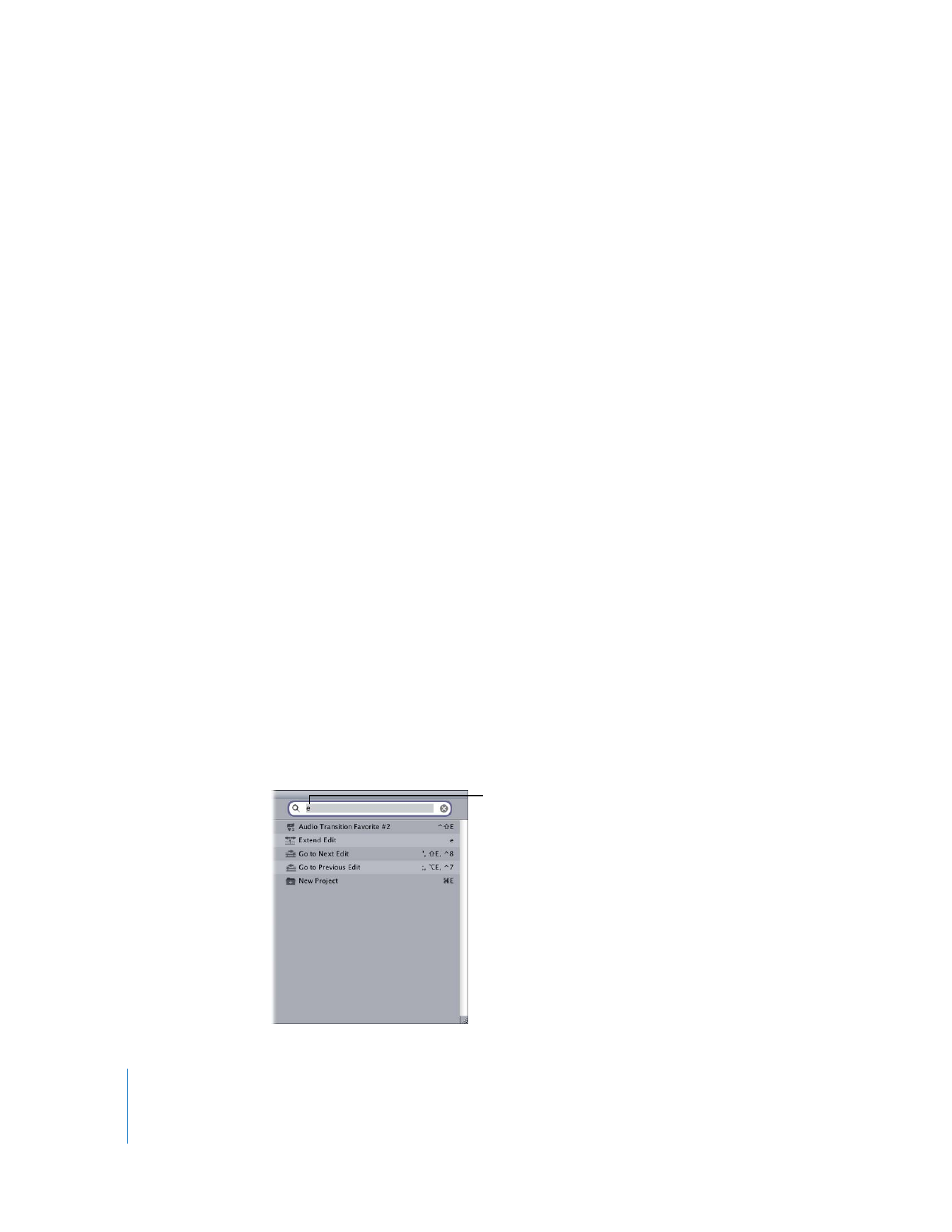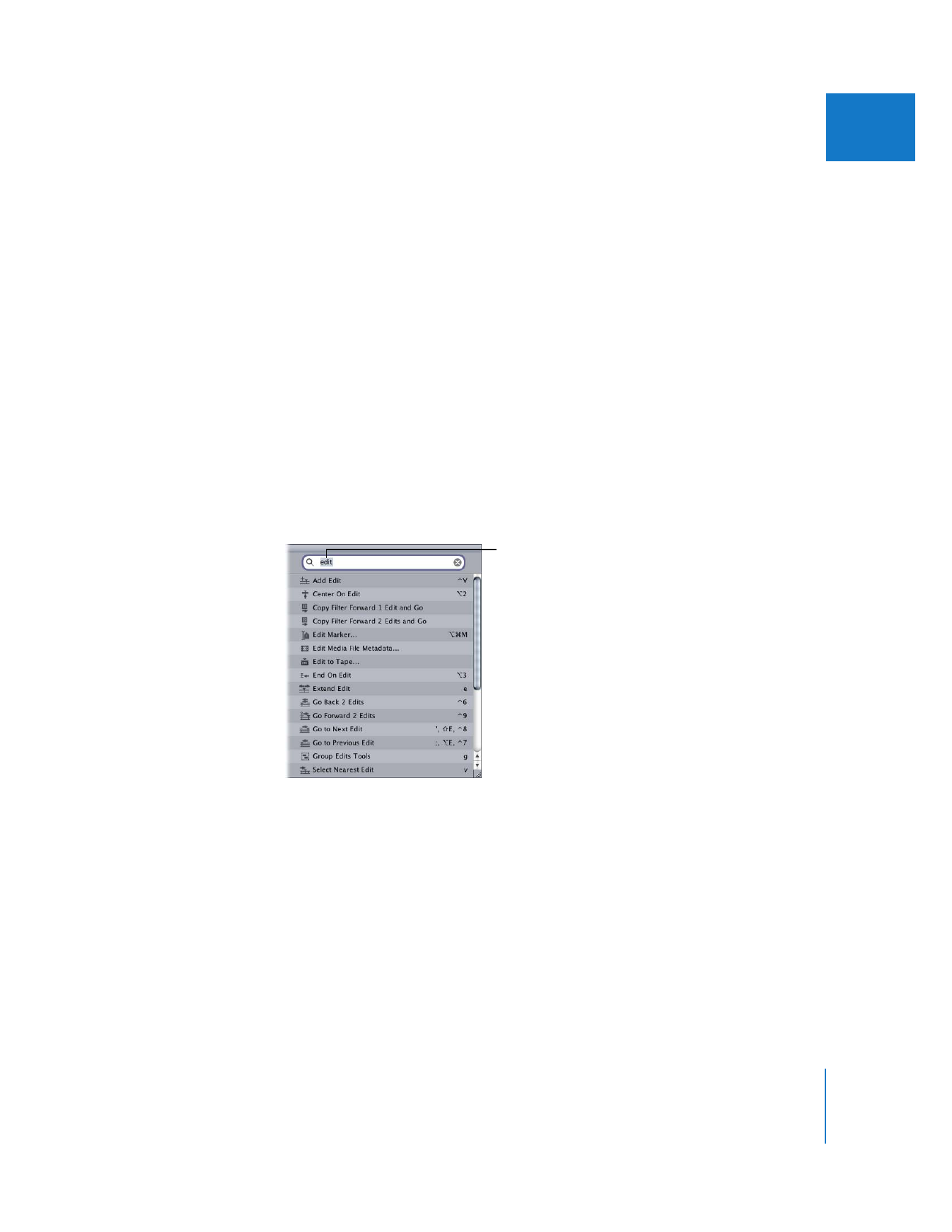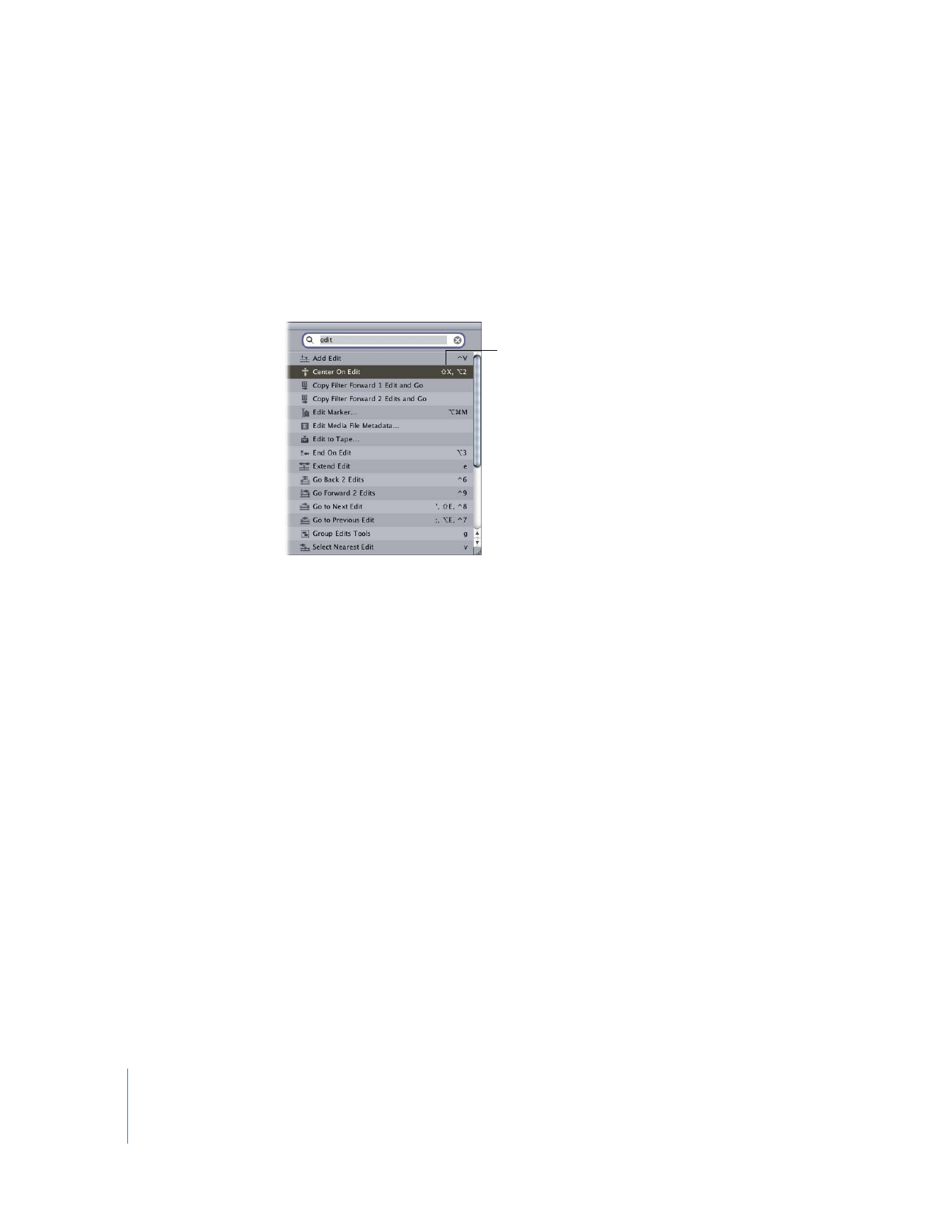
Assigning Keyboard Shortcuts
Specifying shortcuts for commands is easy. You don’t have to set up the entire
keyboard with your preferred shortcuts—you can choose specific menu sets or
command groups. For example, you can specify keyboard shortcuts for all commands
in the File menu or for all render functions.
Important:
Before you begin specifying keyboard shortcuts, make sure you choose the
appropriate language and input type. For more information, see “
Using Different
Keyboards and Languages
” on page 154.
To see which commands have a key or key combination assigned to them:
m
Enter a key or key combination in the search field.
If you press the E key, all
commands that use that
key are shown.

Chapter 10
Customizing the Interface
149
II
To assign keyboard shortcuts to commands:
1
Choose Tools > Keyboard Layout > Customize.
The Keyboard Layout window appears.
2
In the Keyboard Layout window, click the Lock button in the lower-left corner.
3
Click a tab to choose a modifier key or combination of modifier keys.
The keyboard layout for commands that use that modifier key is shown.
4
If you want to create an entirely new layout, click Clear. When a message appears
asking if you want to clear the keyboard layout, click Yes.
All existing keyboard shortcuts in all tabs are cleared and the keys appear blank (no
icons are displayed).
5
In the command list area, do one of the following:
 Click a disclosure triangle to display commands within a menu set or command group.
 Click in the search field. (Commands are displayed alphabetically.)
 Enter the name of the command in the search field. (Commands that match are
displayed automatically.)
If you enter “edit,” all
commands that include
that word are shown.

150
Part II
Learning About the Final Cut Pro Interface
6
Click a command in the list to select it, then do one of the following:
 Press the key or key combination you want to assign as the shortcut.
 Drag the command from the list to the key on the keyboard layout that you want to
assign it to.
Note: The modifier key is already chosen by the tab selected at the top of the
Keyboard Layout window.
If the key combination you set is not currently used for another command, it’s assigned to the
command you selected. The keyboard shortcut you entered now appears next to the
command in the list. The icon for that command also appears on the appropriate key.
If the key combination is already used by another command, a message appears asking if
you want to reassign it. Click Yes. The keyboard shortcut you entered now appears next to
the command in the list. The icon for that command also appears on the appropriate key.
Note: If the command already has a shortcut assigned to it, you can delete the existing
one. If you don’t, the command will have two keyboard shortcuts assigned to it.
7
When you’re finished assigning new key combinations, do one of the following to
prevent further changes:
 Click the Lock button.
 Close the Keyboard Layout window.
Note: Customized keyboard layouts are automatically saved when you close the
Keyboard Layout window.
If you like, you can reassign commands to keys in the Keyboard Layout window.
However, you cannot move commands between modifier keys (tabs). If you make
mistakes as you set up commands, or simply want to clear the command for one or
two keys, see “
Clearing and Restoring Keyboard Layouts
” on page 152.
The keyboard shortcut
you entered appears
next to the command.

Chapter 10
Customizing the Interface
151
II
To quickly reassign the keyboard shortcuts for a command:
1
Choose Tools > Keyboard Layout > Customize.
The Keyboard Layout window appears.
2
In the keyboard area, drag the icon for a command from the current key to the new key.
If you drag an icon to a key that already has a command assigned to it, the new
command takes precedence and the previous command no longer has a keyboard
shortcut assigned to it.
You can also delete the keyboard shortcut for a command in the Keyboard Layout
window. This is useful if you only want to delete keyboard shortcuts for individual
commands and not the entire keyboard layout.
To delete the keyboard shortcut for a command:
1
Choose Tools > Keyboard Layout > Customize.
The Keyboard Layout window appears.
2
In the keyboard area, drag the icon for a command out of the Keyboard Layout window.
For more information on clearing all keyboard shortcuts, see “
Clearing and Restoring
Keyboard Layouts
” on page 152.